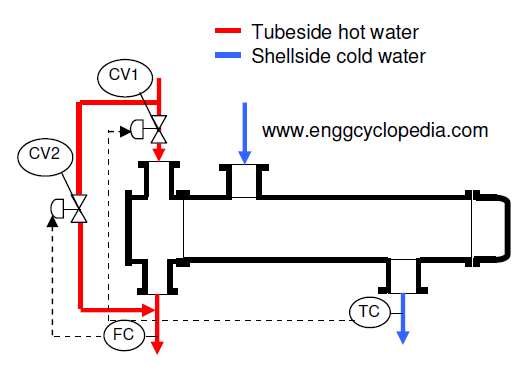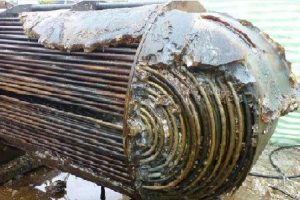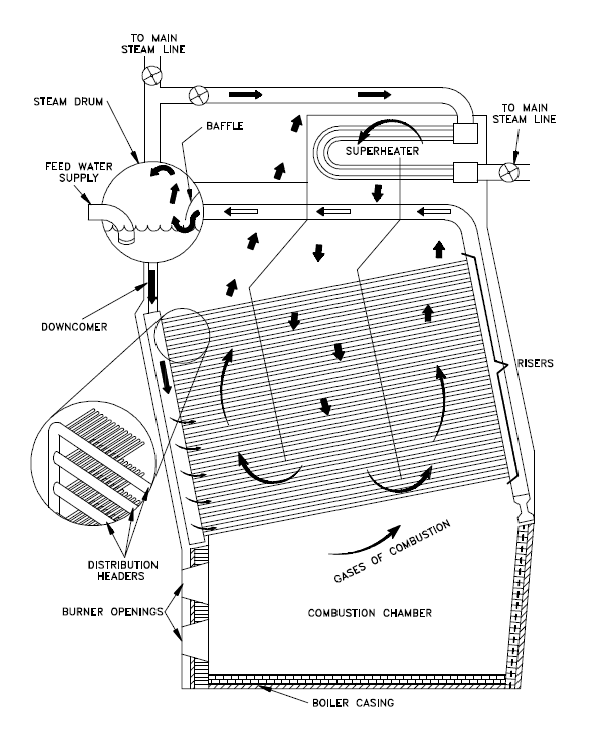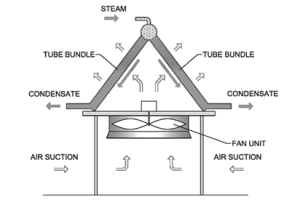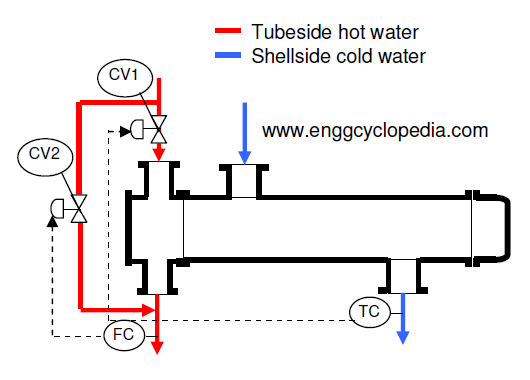Regenerative heat exchangers are devices used to transfer heat between two fluids, often with the goal of increasing energy efficiency and reducing costs. In this post, we will explore the basic operating principles of regenerative heat exchangers, their types, advantages and disadvantages.
Table of content:
1. Classification of Heat Exchangers by Construction
2. Regenerative heat exchanger
3. Types of regenerative heat exchangers
4. Advantages of regenerative heat exchangers
5. Disadvantages of regenerative heat exchangers
Classification of Heat Exchangers by Construction
There are different basis available for the classification of heat exchangers. Heat exchangers are classified into two types on the basis of construction. One is a recuperator and the other is a regenerative heat exchanger.
In recuperator heat exchangers heat transfer takes place without mixing two fluids. Heat transfer occurs through some kind of partition wall or medium. Both fluids will have separate flow paths and flow simultaneously across the partition wall.
Regenerative heat exchangers have a single flow path through which hot and cold fluid passes alternately. The hot and cold fluid alternately flows through a medium. The medium posses necessary thermal capacity to absorb and transfer heat to both the fluids alternatively.
Regenerative heat exchanger
Regenerative heat exchangers work by using a storage medium to transfer heat between two fluid streams. The storage medium is typically a solid material, matrix or packing with a high thermal capacity, such as ceramic, metal, or a phase change material.
The heat transfer process in a regenerative heat exchanger involves alternating the flow of the two fluid streams through the storage medium in a cyclic process.
During the first part of the cycle, one fluid stream is passed through the storage medium, where it is heated, while the other fluid stream is diverted away.
In the second part of the cycle, the roles of the two fluid streams are reversed, with the heated fluid being diverted away and the previously cooled fluid now passing through the storage medium to be heated.
This alternating flow pattern allows for continuous heat transfer between the two fluid streams, with minimal energy loss.
Types of regenerative heat exchangers
There are several different types of regenerative heat exchangers, including:
Fixed matrix / bed regenerators
This type of regenerator use a fixed, stationary matrix to transfer heat between two fluid streams. The fluid streams flow in and out of the matrix through different ports, with the direction of flow being controlled by valves or other mechanisms. The matrix is typically made of a high thermal conductivity material, such as metal, ceramic, or graphite, and is designed to have a large surface area to maximize heat transfer.
In a fixed matrix regenerator, the hot fluid stream flows through the matrix for a set period of time, known as the "hot period," during which it transfers heat to the matrix. At the end of the hot period, the hot fluid is shut off, and the cold fluid stream is introduced into the matrix, flowing in the opposite direction to the hot fluid. As the cold fluid flows through the matrix, it absorbs the heat stored in the matrix during the hot period, warming up in the process.
Rotary regenerators
These heat exchangers use a rotating wheel or drum to transfer heat between two fluid streams. The wheel or drum is typically made of a high thermal conductivity material, such as metal or ceramic, and is divided into a series of channels or compartments.
In a rotary regenerator, the hot fluid stream is directed into one side of the wheel or drum, where it transfers heat to the material in the channels or compartments. As the wheel or drum rotates, the hot fluid is shut off, and the cold fluid stream is introduced into the opposite side of the wheel or drum, flowing in the opposite direction to the hot fluid. As the cold fluid flows through the channels or compartments, it absorbs the heat stored in the material, warming up in the process.
Fluidized bed regenerators
In these heat exchangers, the storage medium is a fluidized bed of particles that is continuously circulated through the two fluid streams. As the particles move between the two streams, they transfer heat from the hot fluid to the cool fluid.
Advantages of regenerative heat exchangers
A regenerator offers several advantages over a recuperating heat exchanger.
1. Larger surface area per unit volume: A regenerator has a much larger surface area per unit volume than a recuperating heat exchanger. This is because the regenerator has a matrix packed with numerous channels that are in direct contact with the hot and cold fluids. The large surface area facilitates efficient heat transfer between the fluids, allowing for a more compact design.
2. Simpler inlet and outlet headers design: Regenerators have a simpler design for inlet and outlet headers than recuperators. In counter-flow regenerators, both hot and cold fluids flow through different sections of the matrix, while in rotary regenerators, the flow sectors can be optimized for hot and cold fluids. This allows for better pressure drop optimization, reducing the pressure required to flow through the matrix.
3. Self-cleaning matrix surfaces: Regenerator matrix surfaces have self-cleaning characteristics that reduce fluid-side fouling and corrosion. This is because the matrix continuously switches between hot and cold fluids, which prevents the buildup of deposits on the matrix surface. Additionally, the matrix surface is generally rough and porous, which creates turbulence and reduces the formation of stagnant fluid pockets where fouling can occur.
4. Regenerators are ideal for gas-gas heat exchange applications. This is because they have a small surface density and a counter-flow arrangement, which facilitates high-efficiency heat transfer. The large surface area in a regenerator also compensates for the lower heat transfer coefficient of gases compared to liquids, allowing for efficient heat transfer.
Disadvantages of regenerative heat exchangers
1. Mixing of fluid streams: In regenerative heat exchangers, there is always a small amount of mixing between the hot and cold fluid streams due to the carryover of a small fraction of one fluid stream into the other.
This is due to the fact that the two streams share the same matrix and cannot be completely separated. The mixing of the fluid streams can lead to a reduction in the effectiveness of the heat exchanger since the desired transfer of energy between the two fluids may not be fully achieved.
Additionally, in some applications, it may be undesirable to have any mixing of the fluid streams, particularly in liquid or phase-changing fluids where fluid contamination can be a major concern.
2. Stress on components: The operation of regenerative heat exchangers involves continuous cycles of heating and cooling, which can put significant stress on the components of the heat exchanger. The high temperature differentials between the hot and cold fluids, combined with the thermal expansion and contraction of the matrix and other components, can cause cracking or breakdown of the materials used in the heat exchanger.
This can lead to decreased efficiency and increased maintenance costs, as well as safety concerns in extreme cases. Proper design and material selection can help mitigate these issues, but they remain a potential disadvantage of regenerative heat exchangers.
